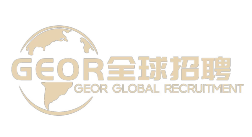Global Talent Recruitment Guide for Enterprises: Systematic Strategies for Efficient Recruitment of Foreign Employees
Enterprise Global Talent Recruitment Guide: Systematic Strategies for Efficient Recruitment of Foreign Employees
In the context of increasingly fierce global competition, the demand for foreign employees with international perspectives, cross-cultural communication skills and professional skills continues to grow. However, from job matching to long-term retention, recruiting foreign employees involves multiple challenges such as language, culture, and law. How to break through the traditional recruitment framework and build a scientific and efficient transnational talent recruitment system? The following four dimensions: demand analysis, channel expansion, compliance management, and cultural integration, to provide a landing solution for enterprises.
1. precise positioning: driving talent demand with business objectives
The blind behavior of "internationalization for internationalization" should be avoided in recruiting foreign employees, turn to disassemble specific requirements from the strategic level of the enterprise:
- skill gap analysis : identify the core skills (such as small language ability, international certification qualification) and differentiation ability (such as cross-cultural project management experience) required by the position;
- market adaptability : determine the source of talents according to the characteristics of the target market (for example, to develop the Southeast Asian market, priority can be given to recruiting talents from Malaysia and Singapore who are familiar with the local culture);
- Team structure optimization : evaluate the cultural background of the existing team, make up for the lack of diversity by introducing foreign employees, and improve the innovation efficiency.
Case Reference : In order to expand the Brazilian market, a cross-border e-commerce enterprise explicitly requires candidates to have Portuguese language ability, be familiar with local payment habits and at least 2 years of Latin American e-commerce experience when recruiting operators, finally, through accurate screening, the start-up cycle of the new market will be shortened by 50%.
2. channel innovation: building a global talent reach network
Traditional recruitment platforms are difficult to meet the precise needs of foreign employee recruitment. Enterprises need to expand the following diversification paths:
- industry vertical community : publish job information on GitHub (technical post), Behance (design post), LinkedIn (management post) and other platforms to attract target groups.
- international talent market : participate in overseas job fairs organized by the government or chambers of commerce, such activities usually gather a large number of high-quality talents who are willing to work across the country.
- University Cooperation Network : Establish cooperation with top universities in the target country to lock graduates in advance through campus lectures and internship programs;
- Employee Inward Mechanism : Set up a recommend reward system to encourage existing foreign employees to recommend their peers, use network to improve recruitment efficiency;
- localization platform : publish information on mainstream recruitment websites (such as Indeed and Monster) in target countries, and optimize job descriptions to match local recruitment habits.
innovative practice : a game company successfully recruited 3 senior Japanese planners and established a long-term talent reserve pool by holding a "global level design competition" on Twitch platform.
3. compliance management: building a strong defense line for transnational employment
The recruitment of foreign employees involves multi-link compliance risks such as visa processing, tax declaration, labor rights protection, etc, enterprises need to establish a standardized process:
- visa type matching : select work visa, talent visa or project visa according to the length of service to avoid employment interruption due to wrong visa type;
- qualification examination standard : some countries require foreign employees to pass language tests (such as TOEIC) or vocational skills certification, and enterprises need to specify the requirements in advance.
- Contract clause design : specify working hours, salary structure, insurance benefits and termination conditions to avoid disputes caused by cultural differences;
- dynamic policy tracking : cooperate with professional legal institutions to regularly update changes in national employment policies to ensure that companies are always on the track of compliance.
Risk Avoidance Suggestions : Formulate the Transnational Employment Compliance Manual, covering the whole process operation guidelines from recruitment to resignation, and organize regular training for HR team.
4. cultural integration: creating a sustainable talent ecology
The retention rate of foreign employees is closely related to their cultural adaptation. Enterprises need to improve their sense of belonging through the following ways:
- entry adaptation support : provide language training, local life guide and cross-cultural communication workshop to help foreign employees integrate quickly;
- differentiated incentive mechanism : set flexible working hours, international medical insurance or family leave and other benefits according to employees' needs;
- career development channel : establish a two-channel promotion system for technical experts and management posts, break nationality restrictions and clarify promotion standards;
- team integration activities : regularly organize cultural days, outdoor development and other activities to promote exchanges between Chinese and foreign employees and eliminate cultural barriers.
data support : research shows that the retention rate of foreign employees in enterprises that provide cultural integration support is 30% higher than the industry average, and the number of innovative proposals has increased by 1.8 times.
Conclusion
Recruiting foreign employees is the key to an enterprise's globalization strategy, but its success depends on the accuracy of demand, channel innovation, compliance rigor and cultural adaptation. Through systematic layout and dynamic optimization, enterprises can not only break through the talent bottleneck, but also stimulate innovation potential in the multi-cultural collision, and build core competitiveness for long-term development. From precise positioning to long-term retention, each step needs to be guided by business value and supported by humanized management solutions, and finally realize the two-way growth of enterprises and talents.
